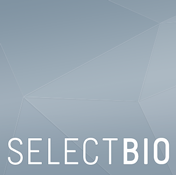Co-Located Conference AgendasLab-on-a-Chip and Microfluidics Europe 2020 | Organ-on-a-Chip, Tissue-on-a-Chip & Organoids Europe 2020 | Point-of-Care, Biosensors & Mobile Diagnostics Europe 2020 | 

Wednesday, 9 September 202008:00 | Conference Registration and Morning Coffee | |
Session Title: Conference Opening Session |
| | 09:00 |  | Keynote Presentation Detection of Antibodies Against SARS-CoV-2 Spike Protein by Gold Nanospikes in an Optomicrofluidic Chip
Amy Shen, Professor and Provost, Okinawa Institute of Science and Technology Graduate University, Japan
The ongoing global pandemic of severe acute respiratory syndrome coronavirus 2 (SARS-CoV-2) has led to active research in its associated diagnostics and medical treatments. While quantitative reverse transcription polymerase chain reaction (qRT--PCR) is the most reliable method to detect viral genes of SARS-CoV-2, serological tests for specific antiviral antibodies are also important as they identify false negative qRT--PCR responses, track how effectively the patient's immune system is fighting the infection, and are potentially helpful for plasma transfusion therapies. In this work, based on the principle of localized surface plasmon resonance (LSPR), we develop an optomicrofluidic sensing platform with gold nanospikes, fabricated by electrodeposition, to detect the presence and amount of antibodies specific to the SARS-CoV-2 spike protein in 1 uL of human plasma diluted in 1 mL of buffer solution, within ~30~min. The target antibody concentration can be correlated with the LSPR wavelength peak shift of gold nanospikes caused by the local refractive index change due to the antigen-antibody binding. This label-free microfluidic platform achieves a limit of detection of ~0.08~ng/mL (~0.5~pM), falling under the clinical relevant concentration range. We demonstrate that our opto-microfluidic platform offers a promising point-of-care testing tool to complement standard serological assays and make SARS-CoV-2 quantitative diagnostics easier, cheaper, and faster.
|
| 09:30 |  | Keynote Presentation Using Microfluidics for Non-Invasive Cancer Diagnosis
Lorena Diéguez, Leader of the Medical Devices Research Group, INL- International Iberian Nanotechnology Laboratory, Portugal
Microfluidics presents numerous advantages for the handling of biological samples, as it provides careful control of fluids in the microscale. When it comes to biomarkers enrichment, microfluidics has demonstrated superior sensitivity and enhanced recovery compared to traditional methods. Incorporating sensors, lab-on-a-chip technologies offer efficient characterization of disease biomarkers from body fluids, making microfluidics ideal for clinical practice, enabling high throughput, portability, and automation. Early dissemination of cancer is difficult to detect by traditional imaging and pathological methods. While the presence of cancer material in body fluids is well known, current techniques for the isolation, analysis and characterization of these biomarkers are not efficient enough to be fully applied in clinical routine. In this talk, we present our work for isolation and multiplex analysis of cancer biomarkers from body fluids based on microfluidics, and biosensors towards personalized medicine and earlier diagnosis of cancer. |
| 10:00 |  | Keynote Presentation Novel Organoid Models to Develop Drug Treatment Strategies
Robert Vries, CEO, HUB Organoids, Netherlands
Organoids such as IPSC derived brain organoids (Lancaster et al Nature
2013) or our adults epithelial stem cell derived organoids (Sato et al.,
Nature 2009, 2011) are proving to be a major breakthrough in
preclinical models. The new patient like models are fundamental change
in the way drug discovery and development can be performed. The
development of the HUB Organoids started in the lab of Hans Clevers with
the discovery of the identity of adult stem cells in human epithelial
tissues such as intestine and liver (Barker et al., Nature 2007; Huch et
al., Nature 2013). With the identification of these stem cells, we were
able to develop a culture system that allowed for the virtually
unlimited, genetically and phenotypically stable expansion of the
epithelial cells from animals including humans, both from healthy and
diseased tissue (Sato et al., Nature 2009, 2011; Gastroenterology 2011;
Huch et al., Nature 2013, Cell 2015; Boj et al., Cell 2015).
We
have now generated HUB organoid models from most epithelial organs.
Recently, we and others have demonstrated that the in vitro response of
organoids correlates with the clinical outcome of the patient from which
the organoid was derived (Dekkers et al., Sci Trans Med 2016; Sachs et
al., Cell 2018; Vlachogiannis et al., Science 2018). In addition, we
have developed a coculture system using HUB Organoids and the immune
system to study this interaction and drugs that target the role of the
immune system in cancer and other diseases.
We have recently
developed new models to study intestinal and lung barrier function and
transport of the epithelium of these organs. These experiments show how
organoids can be used to study mechanism that underly barrier function
disruption in IBD or COPD. Furthermore, we have developed new models to
study the interaction between immune system and epithelium. The
combination of the new coculture models and assay development to study
the epithelium allows us new insights into disease mechanisms and drug
treatment strategies. |
| 10:30 | Morning Coffee Break and Networking in the Exhibit Hall | 11:00 |  | Keynote Presentation Droplet-based Microfluidics for Cancer Research
Valérie Taly, CNRS Research Director, Professor and Group leader Translational Research and Microfluidics, Université Paris Cité, France
Droplet-based microfluidics has led to the development of highly powerful tools with great potential in High-Throughput Screening where individual assays are compartmentalized within aqueous droplets acting as independent microreactors. Thanks to the combination of a decrease of assay volume and an increase of throughput, this technology goes beyond the capacities of conventional screening systems. Added to the flexibility and versatility of platform designs, such progresses in the manipulation of sub-nanoliter droplets has allowed to dramatically increase experimental level of control and precision. The presentation will aim at demonstrating through selected example, the great potential of this technology for biotechnology and cancer research. A first part of the presentation will exemplify how microfluidic systems can be used to compartmentalize and assay various types of cells without deleterious effects on their viability within complex and controlled platforms. The application of microfluidic systems for different cell-based assays will be demonstrated. Illustrative examples of droplet-based microfluidic platforms with high potential impact for cancer research will be presented. We will also show how by combining microfluidic systems and clinical advances in molecular diagnostic we have developed an original method to perform millions of single molecule PCR in parallel to detect and quantify a minority of target sequences in complex mixture of DNA with a sensitivity unreachable by conventional procedures. To demonstrate the pertinence of our procedures to overcome clinical oncology challenges, the results of clinical studies will be presented. |
| 11:30 |  | Keynote Presentation Self-Coalescing Flows: A Powerful Method For Integrating Biochemical Reactions In Portable Diagnostic Devices
Emmanuel Delamarche, Manager Precision Diagnostics, IBM Research - Zürich, Switzerland
Diagnostics are ubiquitous in healthcare because they support
prevention, monitoring, and treatment of diseases. Specifically,
point-of-care diagnostics (POCDs) are particularly attractive for
identifying diseases near patients, quickly, and in many settings and
scenarios. POCDs can also trace exposure and acquired immunity of
populations exposed to infectious diseases and screen metabolic
deficiencies of individuals, who may be exposed to severe drug side
effects. However, a long-standing challenge with POCDs is the need to
integrate reagents in closed devices for a large number of potential
applications. Following our previous contributions on developing
capillary-driven microfluidic chips for highly miniaturized
immunoassays, controlling and monitoring flow with nanoliter precision,
and securing diagnostics against counterfeiting with dynamic optical
security codes, we recently demonstrated how to shape and fold liquids
inside microfluidic chambers to dissolve reagents with extreme
precision. In this presentation, I will explain the underlying concept
of this method, called self-coalescing flows, and will illustrate how it
can be used to perform various assays, ranging from enzymatic assays,
to immunoassays and molecular assays. Despite self-coalescing flows
being still an open research topic in fluid physics, their
implementation is surprisingly facile and robust and therefore may
benefit the entire community working on POCDs. |
| 12:00 |  | Keynote Presentation Nervous Systems-on-a-Chip: From Technology to Applied Biomedical Sciences
Regina Luttge, Professor, Eindhoven University of Technology, Netherlands
Challenges in eavesdropping on the complex cell signaling of the human
central nervous system is an essential driver for the development of
advanced in vitro technologies, called Brain-on-a-Chip. Developments in
Brain-on-a-Chip technology focus primarily on the implementation of
cortical cells from human stem cell source in a 3D cultured
microenvironment. The aim of a recently launched EU project CONNECT is
to mimic the in vivo functions of the nervous system in one connected
chip system. The creation of new neurodegenerative disease models in
this project brings together the knowledge accumulated among
neuroscientists, stem cell experts and engineers to investigate the
origins and possible treatments for Parkinson's disease. In this
presentation, we will discuss in detail the technical approach of a
nervous system on a chip as a unique tool for modelling the neural
pathway of connected tissues on the brain-gut axis. In addition to
design criteria for these microliter-sized physiological cell culture
systems, the presentation will focus on guidance of the growth process
of axon protrusions and the local control of cell differentiation
processes while maintaining physiological conditions. |
| 12:30 | Networking Lunch, Exhibits and Poster Viewing | 13:30 |  Scaling up for High Volume Chip Production Scaling up for High Volume Chip Production
Chris Walker, Director, Microfluidics & Medical Converting Equipment Markets, Preco, Inc.
The benefits of working in automated LOC production are presented, using the method of compiling polymer foil/film and adhesive substrates, alongside discrete lateral flow components with the equipment employed for increasing rates of manufacture.
| 15:30 | Afternoon Coffee Break in the Exhibit Hall | |
Session Title: Current Themes and Trends in Microfluidics Research |
| | 16:00 |  HIGH QUALITY PROTOTYPING as a Bridge to Product Development at STRATEC Consumables HIGH QUALITY PROTOTYPING as a Bridge to Product Development at STRATEC Consumables
Matthias Mösl, Team Leader Protowerk , STRATEC Consumables GmbH
The vast majority of developmental projects for life science and IVD applications require early prototyping. Therefore, the early involvement of injection molding companies like STRATEC Consumables, is becoming more and more important. STRATEC’s focus is on providing an outstanding quality of micro- and nanostructures as well as enabling a smooth transition from early prototyping to mass manufacturing later on. This is supported by specialized design workshops, clearly defined processes applications and sophisticated materials, which are suitable for subsequent mass manufacturing.
| 16:30 | Manipulating Liquids with Shaped Acoustic Fields – Applications In Medical Diagnostics and Drug Delivery
Jonathan Cooper, The Wolfson Chair of Bioengineering, University of Glasgow, United Kingdom
Recently, pressure driven flow through the use of surface acoustic waves (SAWs) has attracted much attention. To better control the nature of the acoustic field when using SAWs, we have introduced the concept of using frequency dependent periodic arrays known as phononic crystals within microfluidics. In doing so, we have enabled new "acoustic holograms" that result in waveguiding, reflectors, bandgaps and lenses, that shape the ultrasonic field and create new microfluidic flows. We are able to demonstrate how we can create interesting new fluidic phenomena including the creation of liquid lenses, enabling the imaging of nanoparticles, including viruses, using a mobile phone camera. This level of precise control over liquid flows has also opened up other fields of study including new applications in drug delivery and diagnostics. | 17:00 |  Sense and Sensibility: A Tale of Complexity in Commercial Microfluidic Device Production Sense and Sensibility: A Tale of Complexity in Commercial Microfluidic Device Production
Holger Becker, Chief Scientific Officer, Microfluidic ChipShop
| 17:30 | Close of Day 1 of the Conference |
Thursday, 10 September 202008:00 | Morning Coffee | |
Session Title: Where is the Microfluidics Field Heading? Commercial Opportunities in the Field |
| | 08:30 | How to Publish with Impact: An Overview from the Royal Society of Chemistry (RSC) Publishers of Lab-on-a-Chip and Other High-Impact Journals
Amelia Newman, Deputy Editor, Analyst, Analytical Methods and Lab on a Chip, Royal Society of Chemistry, United Kingdom
| 09:00 | Has COVID-19 Reshaped the Microfluidics Industry?
Sébastien Clerc, Technology & Market Analyst, Microfluidics & Medical Technologies, Yole Développement, France
The past few months have seen a new biological threat, the COVID-19 infection, caused by the SARS-CoV-2 virus, reshape the entire diagnostics ecosystem. Indeed, the need for respiratory pathogen testing has risen sharply while entire countries lockdown has resulted in a decline in other medical procedures and diagnostics. There have obviously been some winners and some losers in the field. What has the effect of the pandemic been on the microfluidics industry in particular? In this talk, Sébastien Clerc will explain Yole’s vision of how the virus has opened up new opportunities for diagnostics companies, and explain what the impact is for microfluidic companies at different levels of the supply chain and what it could be on the short and long-term future. | 10:30 | Morning Coffee Break and Networking in the Exhibit Hall | 11:00 | An Open Platform Concept for Boosting Innovation and Commercialization of Lab-on-a-Chip
Jens Ducree, Professor of Microsystems, Dublin City University, Ireland
Despite a tremendous boost of innovation, many microfluidic “Lab-on-a-Chip” technologies still struggle to arrive at the widespread commercial success that has already been heralded back as far back as the 1990s. As they often address smaller niche markets, Lab-on-a-Chip technologies often fail to tap into economy-of-scale effects which are vital for reaching high Technology Readiness Levels (TRLs) at costs (per device) that are acceptable within a competitive landscape. By adopting lessons from other, technologically rapidly advancing, mature industries like automotive or electronics, we propose an open platform approach based on sharing a standardised architecture including a library of geometrically parametrized, designed-for-manufacture fluidic modules, simulation and characterization tools to stimulate the formation of multi-party supply chains including foundries and services. System integrators can thus focus on honing their unique selling points (USPs) based on their key enabling intellectual property, e.g., in terms of the assay, reagents, transduction schemes, to substantially accelerate and de-risk their product development path. | 12:30 | Networking Lunch in the Exhibit Hall for the Physical On-Site Participants | 12:30 | Back to the Future: Porting Legacy Assays to Microfluidic Cartridges
Richard Chasen Spero, CEO, Redbud Labs, United States of America
Despite booming investment, the use of microfluidic and sample-to-answer platforms is still dwarfed by traditional molecular tests and immunoassays. Imagine being able to rapidly port this vast back-catalogue of assays to a cartridge-based format. We report on the development of modular microfluidic chips that can readily implement a wide range of legacy assays without degradation in performance, from isothermal amplification to nucleic acid purification. | 13:30 | Microfluidic Devices Powered by Integrated Elasto-Magnetic Pumps
Jacob Binsley, Researcher, University of Exeter, United Kingdom
Utilizing microfluidics to advance point-of-care testing (POCT) has been an area of great interest in recent decades, resulting in the development of a range of highly capable devices. While some POCT devices can be designed to operate using capillary flow, there are many processes which benefit from active pumping. Producing a self-contained chip-based pumping system allows for actively pumped POCT devices to be used more freely without requiring connections to external pumping systems. A range of driving mechanisms have been studied in this context, although they often require complex fabrication or actuation techniques, limiting their potential applications.
In this presentation, I will show how an asymmetric elasto-magnetic system provides a novel, integrated pumping solution for POCT devices. I will explain how elasto-magnetic devices such as this are capable of producing tuneable and reversible fluid flow and how they can be easily actuated with simple apparatus. This presentation will include how these devices can be manufactured using only standard fabrication techniques already employed in the production of microfluidic devices and therefore how these devices can provide an active pumping solution in portable, low-cost systems. | 14:00 |  | Keynote Presentation Advanced Single Molecule Analysis on a Chip
Holger Schmidt, Narinder Kapany Professor of Electrical Engineering, University of California-Santa Cruz, United States of America
Optofluidic devices have emerged as the basis for ultra-sensitive, amplification-free analysis of single molecules. We will describe the core features and capabilities of this approach and discuss recent advances in the areas of novel molecular targets, assay and signal optimization, and signal analysis techniques. |
| 14:30 | Synthesis of Temperature-Responsive Soft Microgels of Any Shape Using Stop-Flow Lithography
Hanna Wolff, Research Assistant, Chemical Process Engineering, RWTH Aachen University, Germany
Stop-flow lithography is a microfluidic method for the fabrication of µm-sized particles with complex shapes. Such particles can be used as building blocks for tissue engineering or soft micro-robotics. Especially, soft and responsive materials are beneficial for these applications; yet, the fabrication of soft responsive particles with complex shape has been rarely reported. In the present work, the technique of stop-flow lithography is used to fabricate soft temperature-responsive microgels with a complex shape. This combination of microgel properties is achieved by using N isopropyl acrylamide (NIPAm) monomer along with crosslinker in the reaction solution. Within the investigations, the polymerization parameters and influences on crosslinking the NIPAm monomer are determined and show the necessity of a threshold amount of crosslinker to form stable microgels. Furthermore, by varying the crosslinker concentration, the stiffness of the microgels can be tailored from very soft to comparably stiff. Moreover, these soft microgels of complex shape show a responsive behavior to temperature making them an excellent building block for life-like responsive tissue engineering. | 15:00 | Production of Spinnerets for Microfluidic Spinning of Biocompatible Microfibers with In-situ Direct Laser Writing
Matthias Geiger, Research Scientist, RWTH Aachen University, Germany
A method for the production of spinnerets for microfluidic wet-spinning of micron-sized fibers has been developed. Biocompatible, mechanically strong microfibers suitable for cell culture were produced from regenerated silk with precise diameter control. | 15:30 | Recent Developments and Applications of Centrifugal Microfluidics
Nils Paust, Head of Division Microfluidic Platforms, Hahn-Schickard-Gesellschaft für Angewandte Forschung eV, Germany
In this talk I will give an overview of recent developments in research, and in the fields, the platform technology of centrifugal microfluidic is applied to. Research at our lab focuses on system integration. Addressed applications range from library preparation for next generation sequencing via integrated analysis from swab sample to digital amplification to fast point-of-care testing of SARS-Cov-2. | 16:00 | Bio-Inspired Microfluidic Flow Control for Lab-on-a-Chip
Jaap den Toonder, Professor and Chair of Microsystems, Eindhoven University of Technology, Netherlands
Control of fluid flow at small length scales (typically < 1 mm) i.e. “microfluidics”, is important for many applications. Examples are Lab-on-a-Chip devices for healthcare diagnostics, in which complex tasks of (bio-)fluid manipulation and detection need to be performed. We are developing new technologies for active control of microfluidic flow. In doing this, we are inspired by nature in which a variety of microfluidic manipulation principles can be recognized. In this talk, I will show:
- Artificial cilia: biomimetic micro-actuators inspired by natural cilia, which are microscopic hairs covering the surface of micro-organisms like paramecium, providing propulsion
- Evaporation + capillary driven micropumping, inspired by fluid transport in plants and trees
- Static and dynamic surface topographies for fluid mixing and droplet manipulation, based on responsive materials, and inspired by bio-surfaces of lotus leaves and sharks
I will present the basic ideas, the materials and processes developed to translate the ideas into a technology, and the microfluidic flow control they make possible.
| 16:30 | Hydrodynamic Confinements: An Enabling Bioanalytical Technology for Tumor Profiling
Govind V Kaigala, Research Staff Member, IBM Research Laboratory-Zurich, Switzerland
Traditionally, compartments are formed with hydrogels, multi-phase systems (droplets), or inkjets for interrogating biological systems. In contrast, we are developing ‘flow confinements’ which comprise compartments formed on a surface by the flow of a shaping liquid around a processing liquid. We termed these implementations collectively as tunable flow confinements (TFC). In contrast to standard microfluidics, which are typically closed, we are developing scanning, non-contact microfluidic technologies that can dynamically shape liquids in the "open space" over surfaces. TFCs are implemented using a liquid scanning probe called the microfluidic probe and function on standard biological substrates such as Petri dishes, slides, and tissue sections when the substrate is kept wet. In this talk, I will show how this family of liquid scanning probe devices is evolving as a versatile bioanalytical tool. I will also propose concepts pertaining to tissue microprocessing encompassing local phenotyping and molecular profiling, which may contribute to the multi-modal analysis of critical biopsy samples and conclude with a few possibilities beyond medical applications. | 17:00 | On-Line Visualization of Colloidal Filter Cake Motions
Arne Lüken, Researcher, Aachen University, Germany
Membrane ultrafiltration is a low-energy unit operation for soft matter or colloid purification. This process suffers from the agglomeration of the filtrated matter on the surface of the membrane, the so-called gel layer or filter cake. This undesirable cake layer rises the resistance for the fluid permeating the membrane, and thus, increases the energy consumption of the process. In this study, the authors visualize the motion of a soft colloid cake layer using laser scanning confocal microscopy inside a microfluidic filtration module. They analyze the filter cake’s organization and its dynamic motion while performing widely applied cleaning strategies, such as backflushing and crossflow flushing. They present the inner organization of the cake and find responsive 3D-motions of the filter cake under shear stress. This unique cake behavior suggests new strategies for filtration processes and additionally demonstrates the potential of applying microfluidic analysis methods to macroscopic research fields. | 17:30 | Close of Day 2 of the Conference |
|


 Add to Calendar ▼2020-09-09 00:00:002020-09-10 00:00:00Europe/LondonLab-on-a-Chip and Microfluidics Europe 2020Lab-on-a-Chip and Microfluidics Europe 2020 in Rotterdam, The NetherlandsRotterdam, The NetherlandsSELECTBIOenquiries@selectbiosciences.com
Add to Calendar ▼2020-09-09 00:00:002020-09-10 00:00:00Europe/LondonLab-on-a-Chip and Microfluidics Europe 2020Lab-on-a-Chip and Microfluidics Europe 2020 in Rotterdam, The NetherlandsRotterdam, The NetherlandsSELECTBIOenquiries@selectbiosciences.com